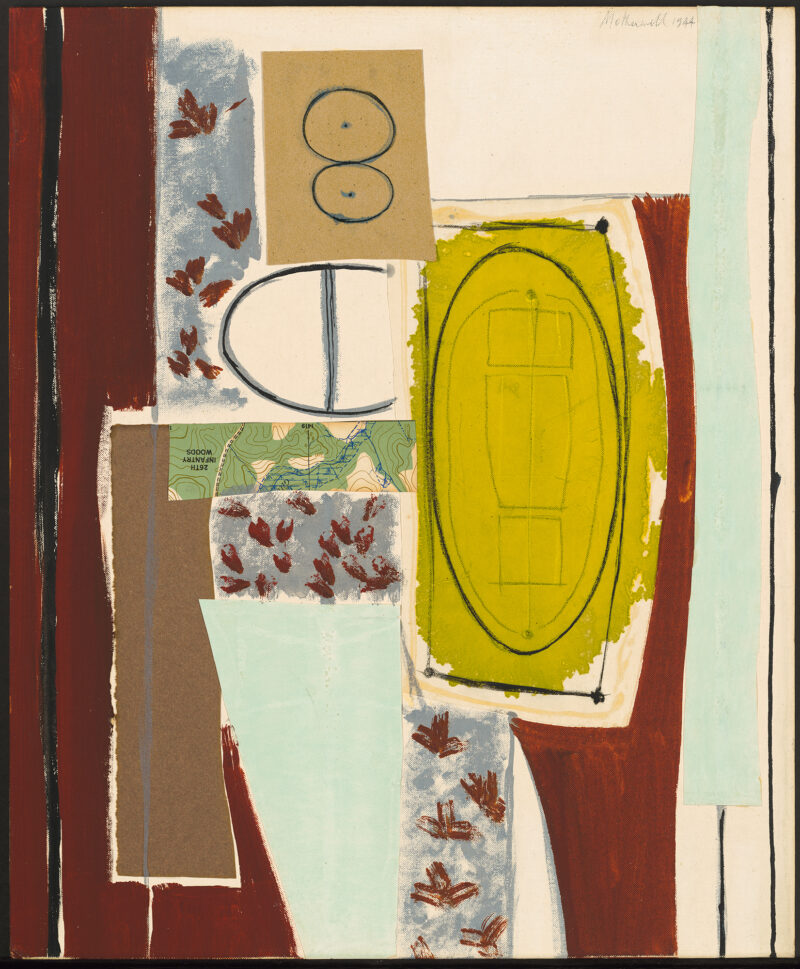
Painter, The
Motherwell, Robert
1944
Artwork Information
-
Title:
Painter, The
-
Artist:
Motherwell, Robert
-
Artist Bio:
American, 1915–1991
-
Date:
1944
-
Medium:
Oil, crayon, pasted sandpaper and papers, and printed map
-
Dimensions:
24 x 19 7/8 inches
-
Credit Line:
Wichita Art Museum, Museum purchase, Wichita Art Museum Members Foundation, and the National Endowment for the Arts Museum Purchase Plan
-
Object Number:
1969.4
-
Display:
Not Currently on Display
About the Artwork
This object is one of a series of seminal collage works executed by Robert Motherwell in 1943 and 1944, works in which he developed some of the most enduring themes and motifs of his pictorial language—pictorial themes subsequently explored in his signature abstract expressionist paintings and in monumental collage works of the 1960s and 1970s. Motherwell was attracted to the medium of collage by his admiration for the French modernists Picasso, Braque, and Matisse as well as his interest in European surrealism.
The Wichita Art Museum’s The Painter exhibits Motherwell’s preferred abstract schema of organic and emotive elements including color, textures, found papers, and irregular markings held in suspension for contemplation by a rationalistic architectonic grid work of horizontal and vertical rectangles. The collage medium allowed Motherwell to incorporate elements of surrealist technique such as automatic drawing or graffiti—seen here in the contour drawing in the center of the yellow-green paint on mulberry paper and the black outline of a rectangle framing the contour of an ovoid shape. The motif of an ovoid held in a vice of rectangles was to become the dominant motif in Motherwell’s signature paintings of his favored theme of war elegies.
This collage shares with others in its series specific allusions to contemporaneous events of war that engaged so many members of the artistic community, especially in New York where aspiring American artists came into direct contact with the refugee European artists who imported to the United States not only their radical modernist aesthetics but also their bitter experiences of WW II. The small rectangle shape of white with a black line down the center located in the lower right corner echoed the motif of a jail window introduced in Motherwell’s 1943 collages dedicated to the Spanish Civil War and to Poncho Villa. The small horizontally oriented rectangle of cut green and white map paper was taken from a contemporaneous military contour map appears in other collage images of 1944. Motherwell told Jack D. Flam in an interview of 1983 that he regarded his collages as “a kind of private diary” that allowed him to incorporate intimate subjective associations with the real world into his abstract imagery.